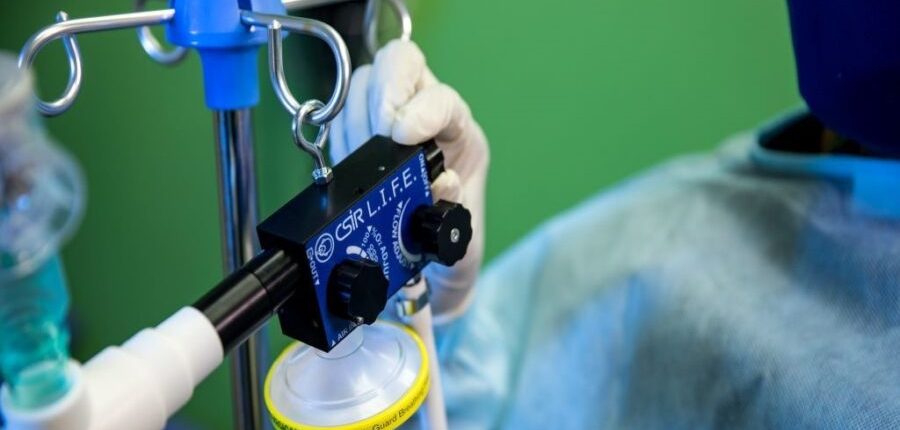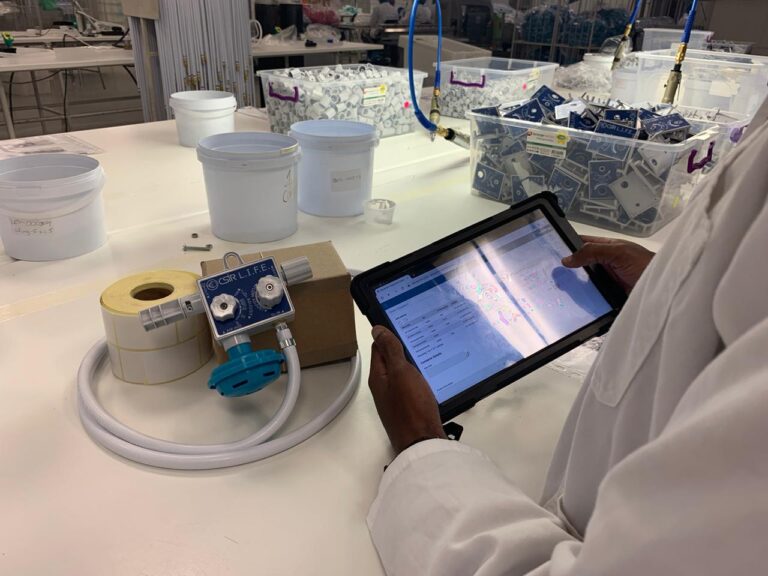
Digital Transformation Accelerates Ventilator Production in South Africa
How the Council for Scientific and Industrial Research Transformed Manufacturing Practices to Combat COVID-19
With the COVID-19 pandemic taking a huge toll on lives worldwide, a multidisciplinary, multiorganizational South African team was able to design, develop, and produce 18,000 ventilators within the span of 3 months. This amazing success story was possible because of the digital transformation of the design and production processes on which the teams relied.
The Council for Scientific and Industrial Research (CSIR) was contracted to support the National Ventilator Program as part of the South African Government’s response to the COVID-19 pandemic. The result was the rapid development and distributed production of a non-invasive pre-intubation ventilation solution.
The South African National Ventilator Project had stringent requirements for product design and development, device usability, quality, and regulatory compliance and licensing under the South African Health Products Regulatory Authority and the World Health Organization guidelines. Because of these requirements and the short timeframe, intense parallelization of production processes as needed. Multidisciplinary teams had to work in parallel streams while coordinating their activities towards the end product. This orchestration would have been impossible with a paper-based system.
The Siemens Solution
Siemens was honored to partner with the CSIR on this project. The Siemens Rapid Implementation Package enabled a 3-week development of the digital manufacturing foundation, using Siemens Opcenter Execution and Siemens Teamcenter systems.
Siemens Teamcenter created the “Digital Thread” between the virtual space (digital design) and the physical space (actual production). All the data across design and production systems were stored in this collaboration layer. The virtual side of the architecture contained the “Digital Twins” of the physical production side.
Starting with the requirements, the team used model-based systems engineering, created the concept design, and did the actual physical design with Siemens CAD and CAM tools (NX and Simcenter Flow). These were systems that comprised the virtual space of the architecture. The Quality Control process was also defined and tracked across the virtual and physical space.
After creating the virtual design, or the Digital Twins of the product and manufacturing process, Siemens Opcenter served as the Manufacturing Execution System (MES) to translate the digital design into the physical production sites. Given there were multiple production sites – including CNC, injection molding, and assembly sites – the capability of Siemens Opcenter to be scalable across a distributed manufacturing environment was critical.
The result was a completely integrated digital infrastructure that unified design, production, quality, and compliance requirements. Siemens Opcenter provided critical MES capabilities to accelerate the transfer from design to production:
- Physical Model Management
- Process Model Management
- Product/WIP Traceability, Genealogy, and Audit Trail
- Equipment Traceability and Audit Trail
- Electronic Work Instruction
- Electronic Device History Record (eDHR)
These capabilities delivered a paperless manufacturing environment that enabled coordination and optimization of orders, materials, events, and tasks, providing end-to-end manufacturing enforcement and a single as-built track and trace record.

The implementation resulted in an integrated, full lifecycle management system to unify the teams operating in parallel. The scalable, cross-site solution, along with the rapid zero-code modeling approach, ensured manufacturing of various parts could be coordinated across multiple sites, and adjustments to production modeling could be handled seamlessly. This was a true “virtual factory,” with parts manufactured across different facilities and assembled at one final site.
The process of design to production for this type of equipment would typically take 18 months. The achievement of a 3-month start-to-finish process exemplifies how digital transformation allows manufacturers to respond flexibly and efficiently in crises and anticipate and accommodate the changing market demands that have increased over the last decade.
“We were looking for an MES system that could operate across multiple organizations at a large scale. Siemens Opcenter was able to manage all the different parts of our virtual factory seamlessly,” said Riaan Coetze, Project Manager, CSIR.
Lessons Learned in the Project
Digital lifecycle management was required to orchestrate the multiple streams of work across multiple sites that encompassed the rapid design and development of the ventilators. Changes in product design have an impact on production as well as regulatory requirements. The linkages need to be understood and rapidly communicated. A capability that only exists if you have a digital infrastructure that integrates PLM, ERP, MES, and QMS and interoperates with the shop floor’s underlying automation and equipment.
For the CSIR project, there were two tracks of manufacturing, the CNC machining and the injection molding, and the third site for assembly, packaging, sterilization, testing, and storage. Over a dozen entities participated virtually across various global locations, including universities, government, manufacturing locations, medical facilities, and the Siemens implementation team.
Not only did the digital infrastructure allow the coordination of all these teams, but it reduced the time and cost of production using a digital twin for simulation. Using the product design and production specifications, simulation of the production process and virtual commissioning allowed the optimization of production before any physical resources were expended. Project leaders estimate that 50% – 60% of production issues were solved in the virtual space.
Especially in the COVID-19 environment, the collaboration across remote teams was critical. Throughout the entire project, there were only 2 factory visits. Over 1000 teleconferences were held among team members working 60 – 80 hour work weeks. The example of this approach is a standard for future manufacturing in South Africa. The CSIR expert ecosystem of universities, science councils, international experts, industry experts, domain experts, business experts, and commercialization experts will propel South Africa into the 4th Industrial Revolution.

Don’t hesitate to contact Thanh for advice on automation solutions for CAD / CAM / CAE / PLM / ERP / IT systems exclusively for SMEs.
Luu Phan Thanh (Tyler) Solutions Consultant at PLM Ecosystem Mobile +84 976 099 099
Web www.plmes.io Email tyler.luu@plmes.io
